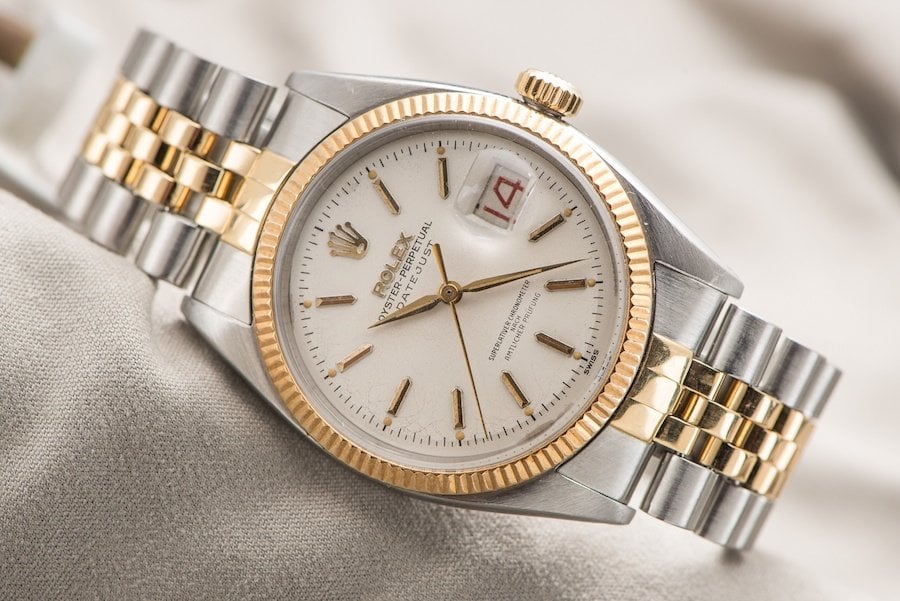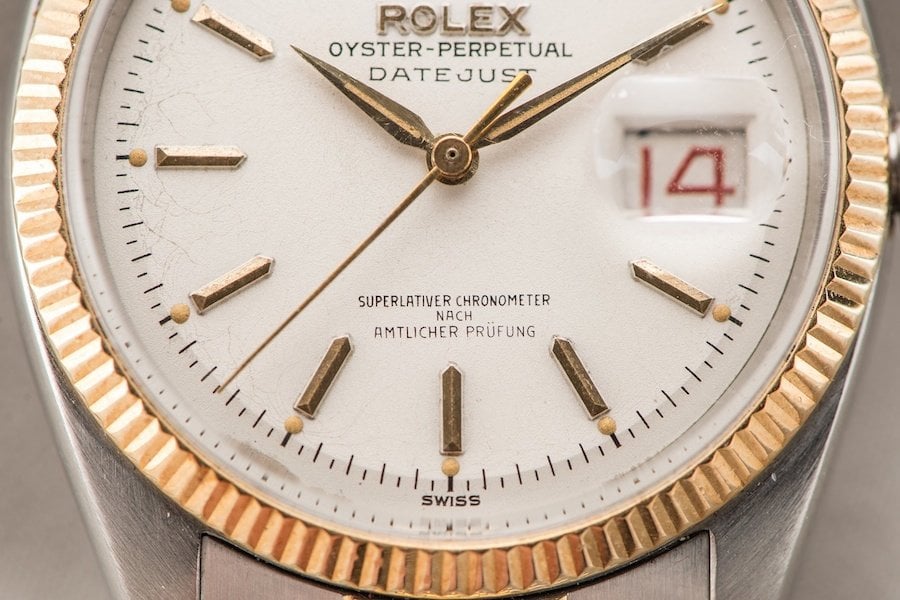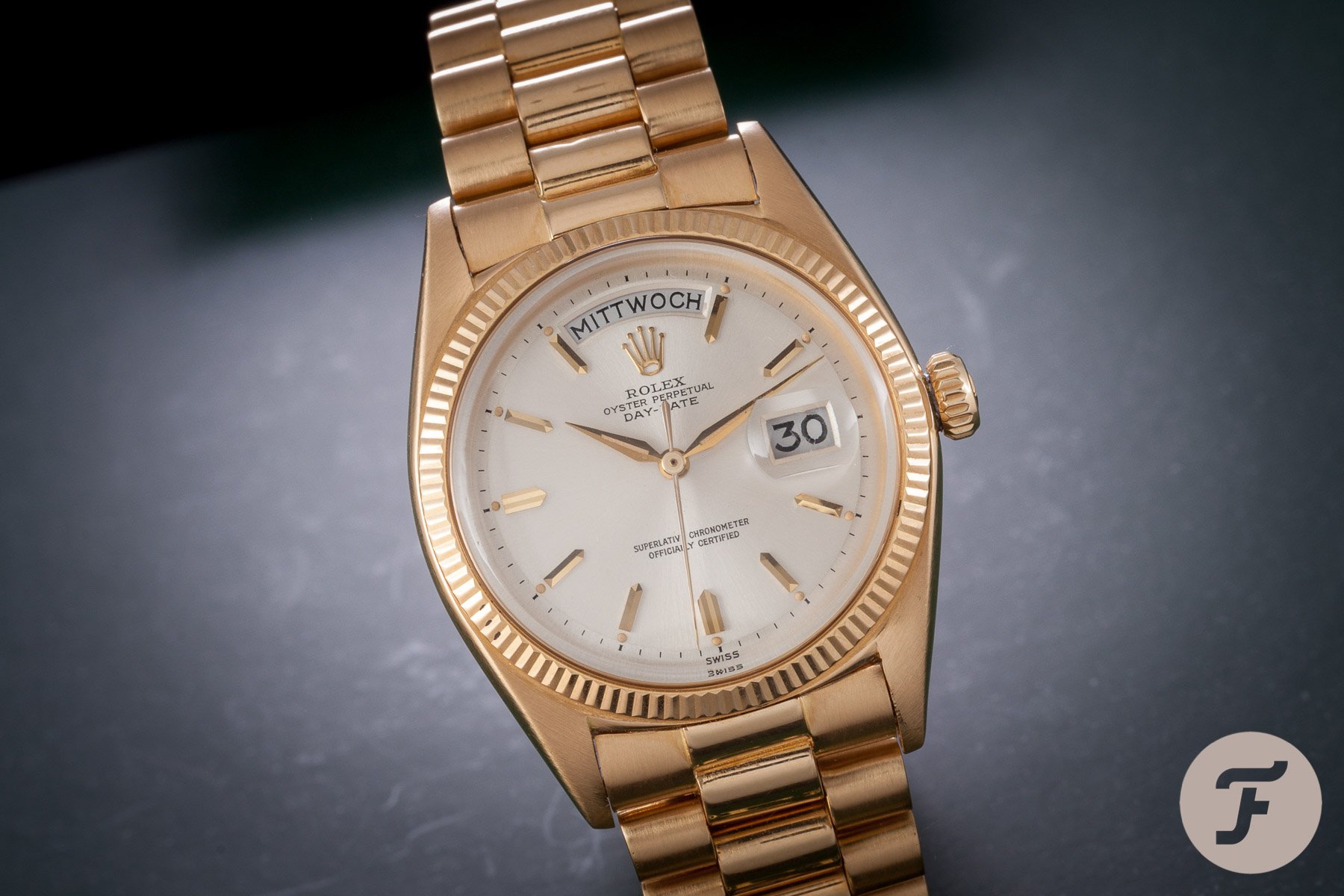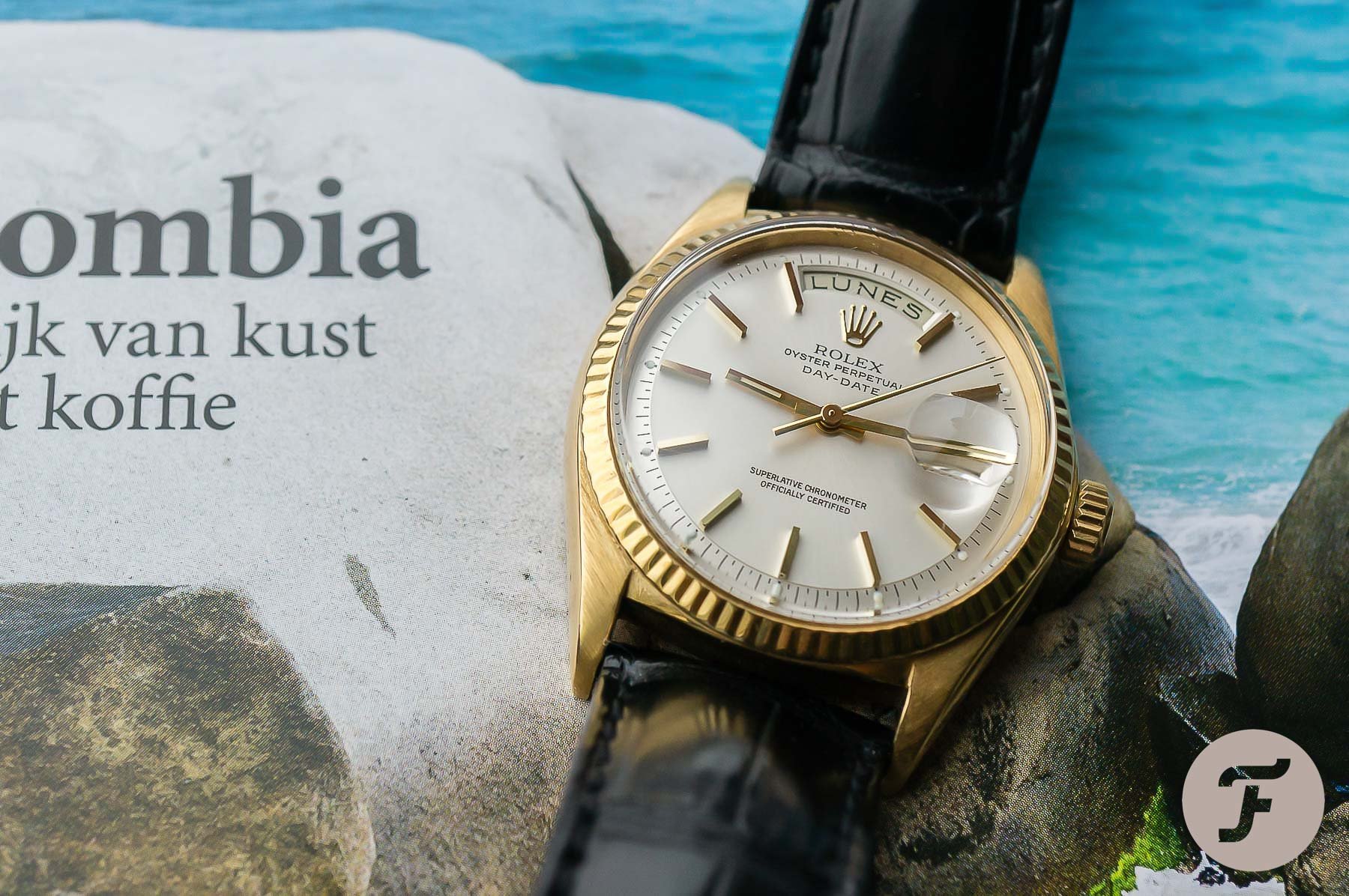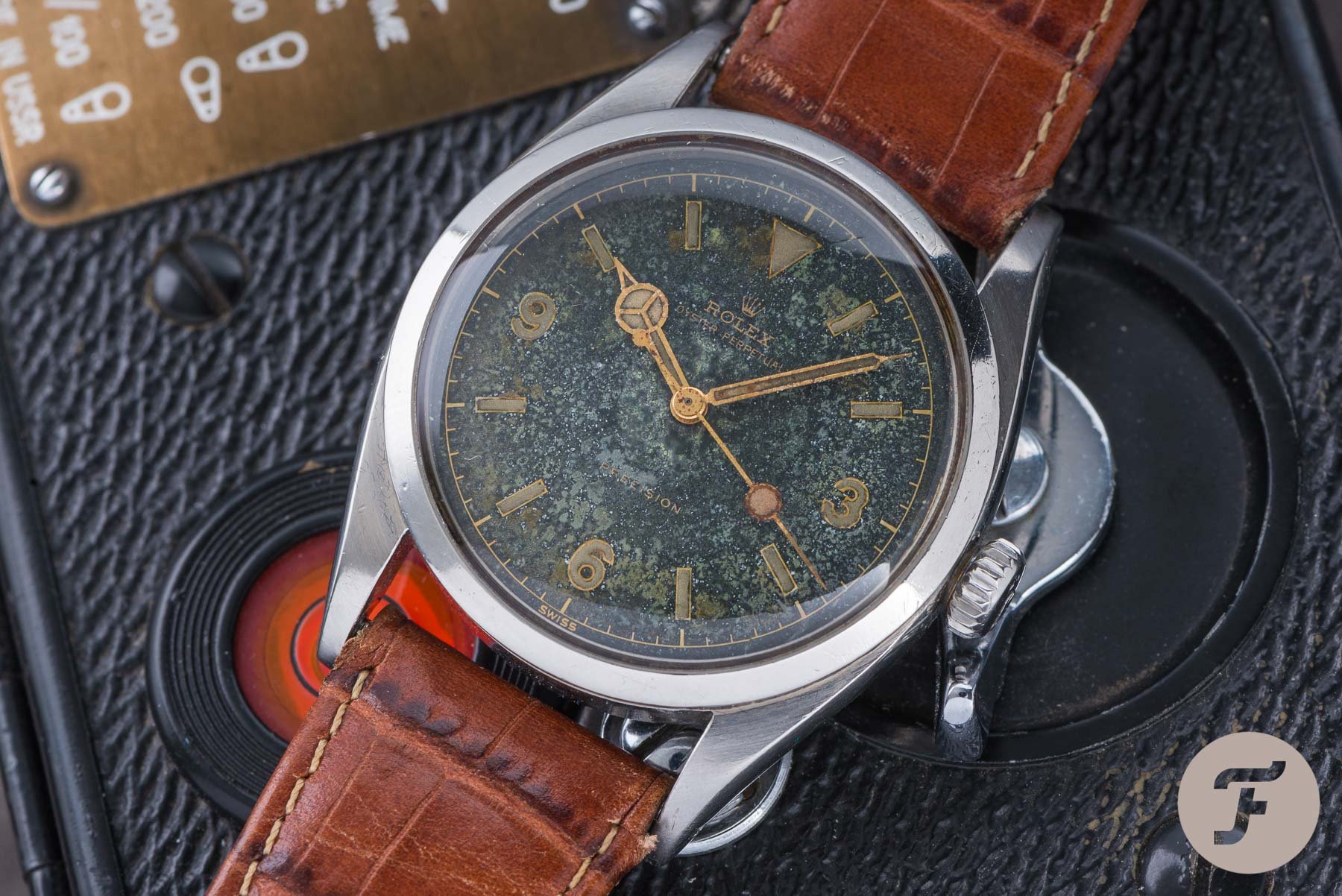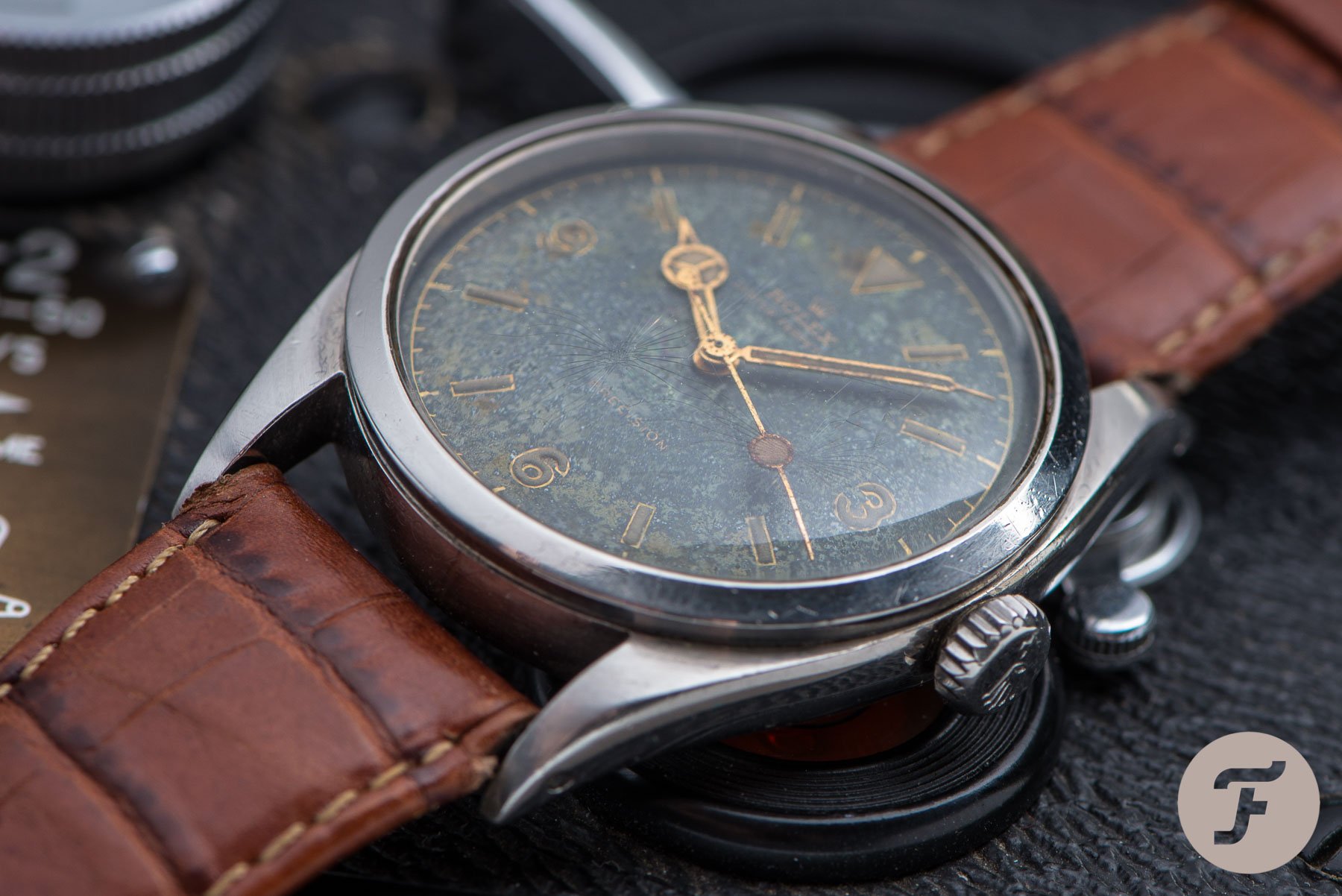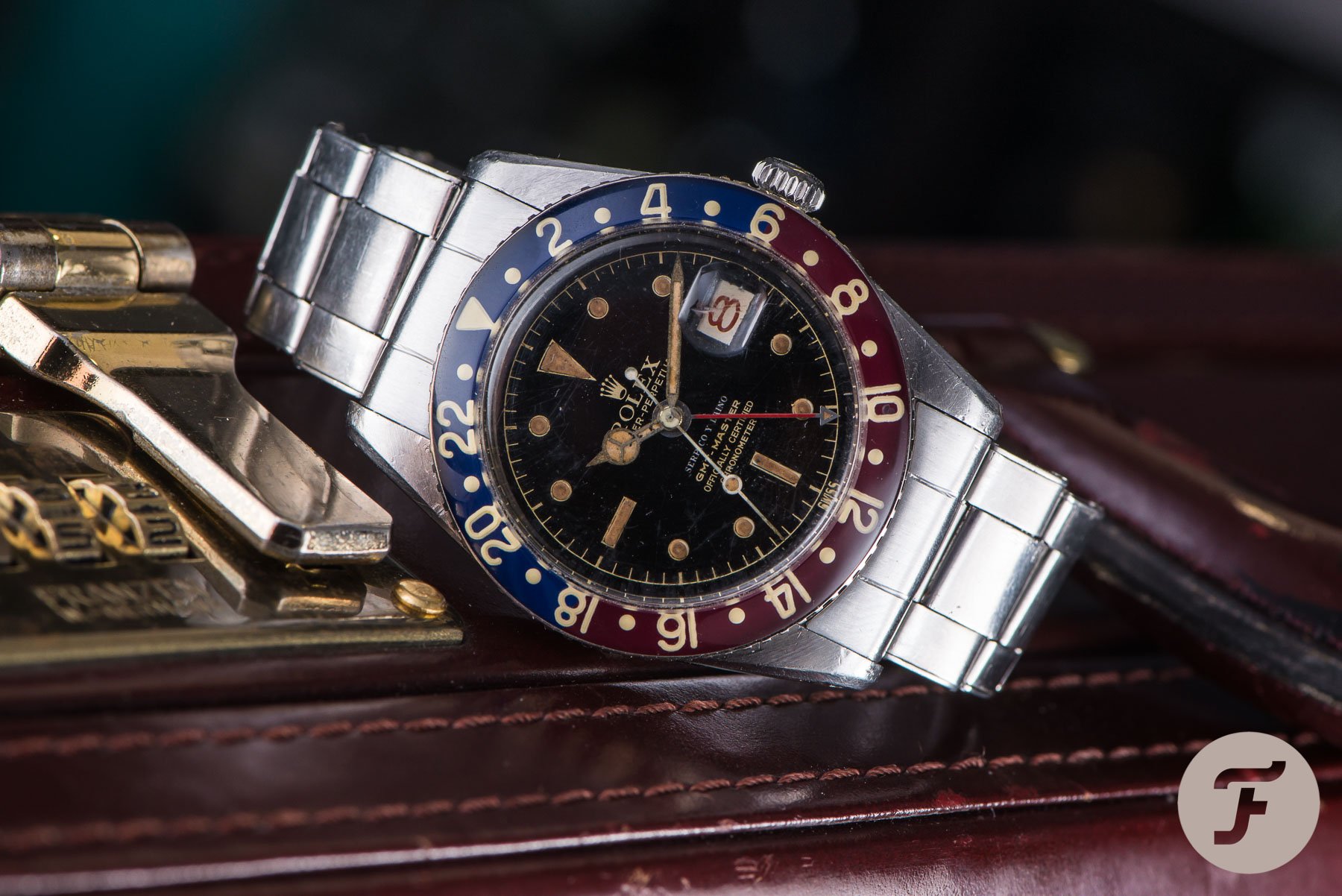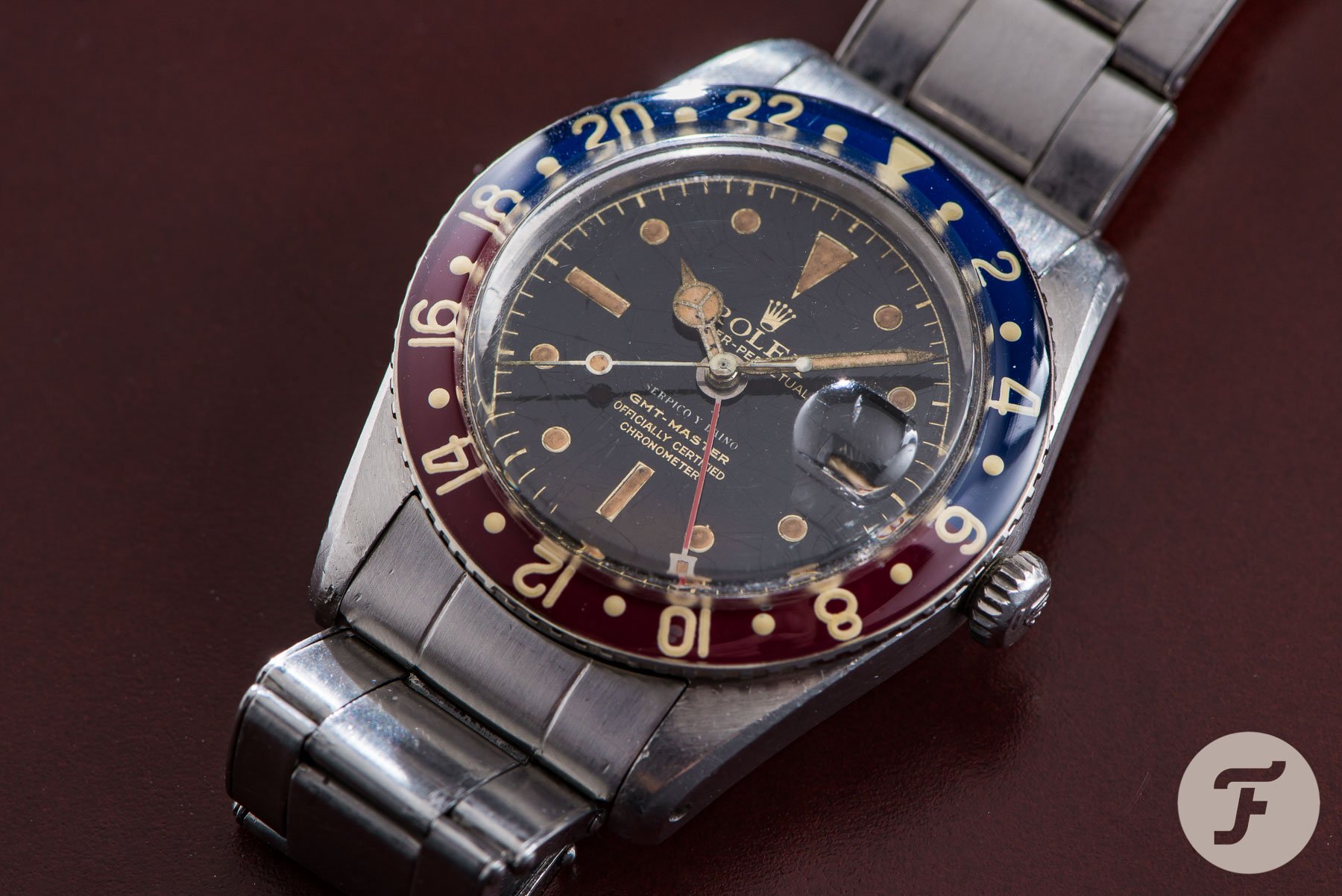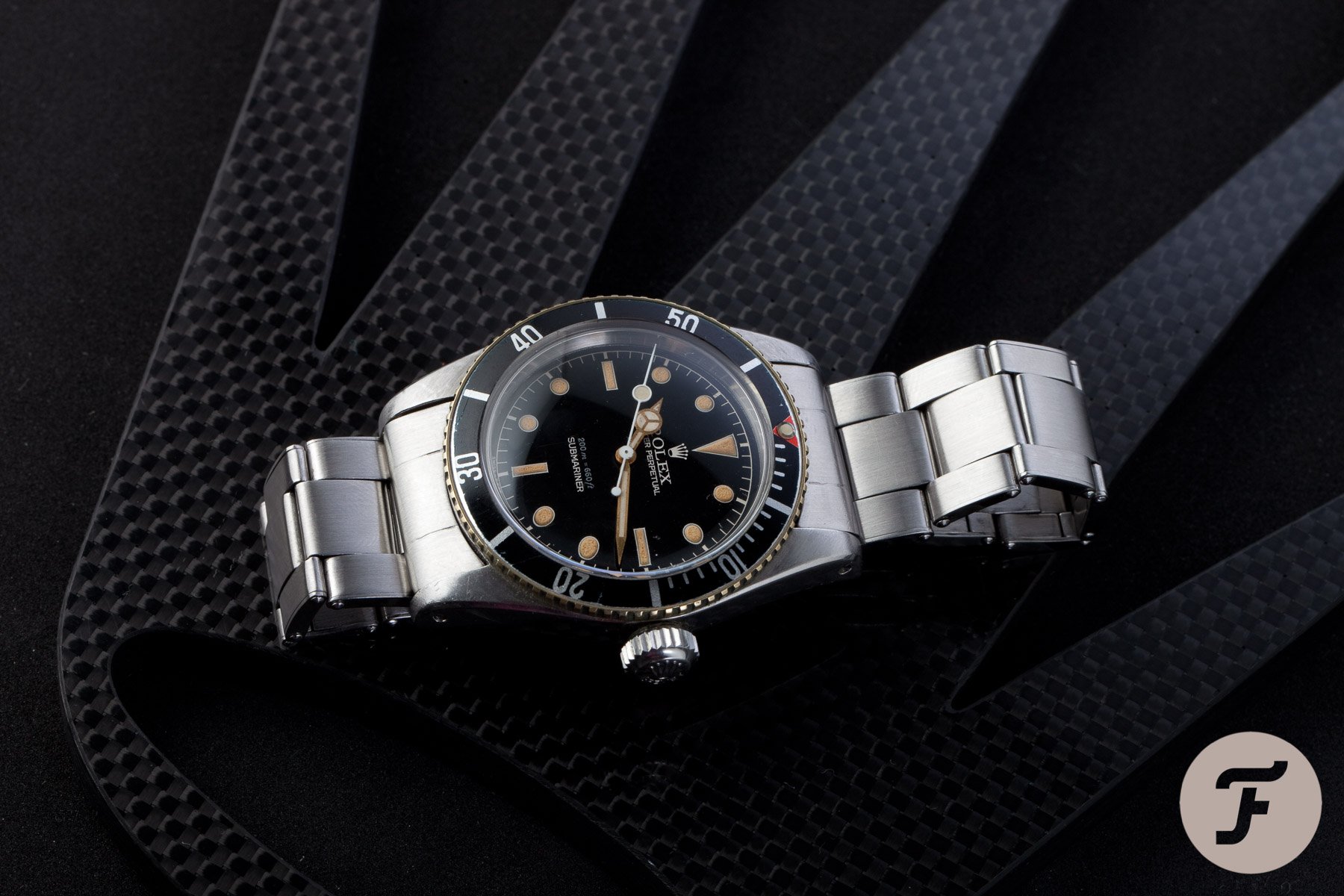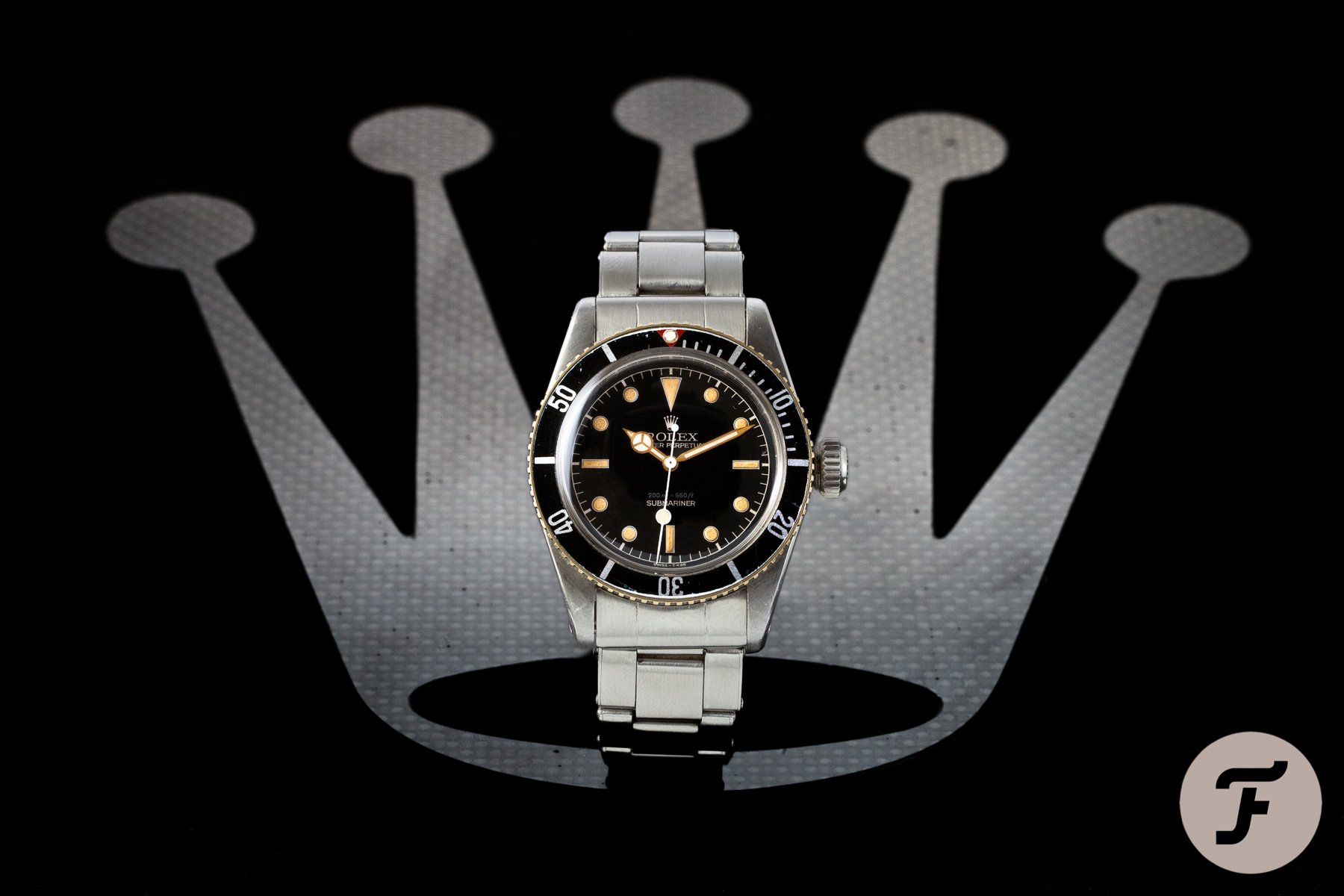Buying Guide: The Best Rolex Watches From The 1950s
We like to talk about vintage watches a lot within the Fratello team. Where the daily routine is largely focused on the most recent developments in the world of watches, the most fun for many of us lies in the world of vintage watches. It’s a world full of history, remarkable watches, incredible stories, and quirky details. It inspired us to come up with a series of articles focusing on the best watches per decade from a select group of brands. Some of them priceless, some of them still affordable. But all of them are remarkable watches. This week we’ll kick things off with the best Rolex watches from the 1950s.
The best Rolex watches from the 1950s? What does that actually mean? Every week we try to come up with a small selection of special watches for several reasons. Maybe they are the icons, maybe they are the affordable options, maybe they are technically brilliant, or maybe they look amazing. It can be anything really as long as they stand out. We’ll try and mix up things as much as possible and define an entry-point watch, my preferred choice, and we’ll close out by the icons where the money is no object.
A great era for Rolex lovers
For the best Rolex watches from the 1950s, there is no way around some of the watch industry’s biggest icons. In the fifties, Rolex released a series of watches that would go on to define modern-day watchmaking. However, some of these icons do not have to cost you an arm and a leg. Don’t get me wrong; vintage Rolex watches don’t come cheap. As you will understand, the ‘money is no object’ section is bigger than with some of the other brands we will cover in the upcoming weeks and months. But not every model from the 1950s requires you to remortgage your house. So let’s find out what some of the best Rolex watches are from the 1950s.
The entry-point – Rolex Datejust ref. 6605
If you would like to own a relatively affordable piece of 1950s Rolex brilliance, the Datejust is a great option. The Rolex Datejust was first introduced in 1945, and over 75 years later, it is still pretty much untouched when it comes to its design. When it comes to a Datejust, I have an enormous soft spot for the steel and gold versions with fluted bezel and a Jubilee bracelet. There is something cool and classy about them. But any Datejust is a great part of any watch collection.
The Datejust ref. 6605 (fluted bezel) was introduced together with ref. 6604 (smooth bezel) in 1956 and both came in steel, steel and gold, and fully gold versions. Now, why choose this reference 6605 above its predecessor, reference 6305? The main reason is the upgrade to the Caliber 1065. Besides being a step up in quality, the movement also has a slimmer profile than its predecessor, the Caliber 745. It changed the curvature of the caseback and therefore making it lighter and easier to wear.
It’s a matter of size
But I would go as far as stating that getting your hands on one of the many Datejust references from the 1950s is an absolute treat. The biggest reason is that the 36 mm-sized cases used for the Datejust are still perfect to wear nowadays. Quite a few of the Rolex models around at that time, like the Oyster Perpetual and the Air-King, had a 34mm case. Now, if you have a smaller wrist size, your options are even greater in finding an affordable Rolex timepiece from the fifties. Because there are absolute Rolex stunners that come in 34mm like, for instance, the Air-King ref. 5500 and the Oyster Perpetual ref. 6084.
Finding one in good condition can be a challenge.
Finding a Datejust ref. 6605 is not difficult. But as with all vintage watches, finding one in good condition with its original parts can be challenging. Some of the most common replacement parts are the hands — as you can see from the ref. 6605 pictured, the Datejust used to have Alpha hands, the bezel, the crystal — with the cyclops introduced in 1954 and the Roulette date disc that shows even number in red and uneven in black. Prices range from around 4k to 10k for a steel or a steel & gold version and anywhere from 7k to 25k for a full gold one. And that is rather affordable considering some of the prices paid for some other Rolex models from that era. A Datejust would be my answer every time to what affordable Rolex watch to get from the 1950s.
My choice – Rolex Day-Date ref. 6611
Another one of those Rolex icons introduced in the 1950s is the Rolex Day-Date. As some of you know, Robert-Jan and I love full gold Day-Dates. No other watch oozes the same classy style in full gold as the Day-Date. When it was first introduced in 1956, the Day-Date was Rolex’s new flagship model. The watch was only available in 18-carat gold (white, yellow, and rose) and platinum. On top of that, it was the first self-winding chronometer-certified wristwatch that was waterproof and sported that typical day indication at 12 o’clock and date indication at 3 o’clock. This specific way of displaying the day and date is the stand-out feature of the Day-Date.
The first references were only produced for a year.
The first references Rolex introduced in 1956 were the ref. 6510 (domed bezel) and ref. 6511 (fluted bezel). These are incredibly hard to find because they were only produced for a year. Its biggest flaw was the movement because it didn’t build up enough power reserve to switch to the next day at midnight. It’s why Rolex introduced the ref. 6610 and ref. 6611 in 1957 with an updated version of the caliber 1055 movement featured a free-sprung balance with micro-stella adjustment. That is why ref. 6611 is my preferred pick as the Day-Date to chase from the 1950s.
The original Day-Date design
The Day-Date ref. 6611 was in production until 1959 when it was replaced by the first of the famous Day-Date 1800-series. Designwise, there are some differences, with the main one being the handset. Pictured above is Gerard’s Day-Date ref. 1803 from 1967, and as you can see, it is visually closer to the modern Day-Date. Like with the first generation GMT-Master, the charm of the original is what makes the ref. 6611 such a stunner. Wear it, and you wear a true piece of watch history on your wrist.
One of the most majestic watches ever made.
And the best thing is, they are not massively expensive like the first generations Submariner and GMT-Master we’ll get to later, which is remarkable because we are talking about Rolex’s flagship model that only comes in precious metals. Your most affordable option is one on a leather bracelet and starts around 8k, and a version on a bracelet starts around 15k. Considering the Day-Date’s status, its current list price of over 30k, and the prices of some of the other Rolex icons from the same era, this is a very affordable option. The dangers? Basically, it’s the same list of replaced parts that could mess with the watch’s original state. If you manage to find one in original and good condition, you will know and feel that you own one of the most majestic watches ever made.
Money is no object #1 – Rolex Pre-Explorer ref. 6150
The next watch on this list of five legendary Rolex watches from the 1950s is the Rolex ref. 6150. This famous reference is also known as a Pre-Explorer, and it was produced concurrently with the famous first Explorer ref. 6350. That was the first reference to feature the word Explorer on the dial. Now, why would I choose this reference over the original Explorer? The answer to that is a simple one. I had the unique opportunity to wear the ref. 6150 you see in the pictures, and I haven’t had the pleasure of trying on a ref. 6350. But this is just as much part of the great lineage of Rolex Explorers that came after.
This watch was part of the era of the famous race to conquer Mt. Everest.
The moment I put this on my wrist, I realized that this watch was part of the era of the famous race to conquer Mt. Everest. Now three big vintage watch stories fascinate me greatly. The first is obviously the Speedmaster and its connection to space exploration, resulting in the moon landing. The second story is the James Bond story connected to the Submariner. And the third story is the conquering of the highest peaks on our planet. And I deliberately say peaks. For me, the spirit of that era of mountaineering is more important than the long-lasting discussion on who conquered Everest first. And putting the ref. 6150 on my wrist directly connected me to that era of great adventures and historical accomplishments. It felt exceptional.
The same movement but different
While technically not an Explorer, this ref. 6150 is pretty much the same watch as the ref. 6350. Both feature a 35.5mm case with the iconic black 3-6-9 dial that we have come to know as the “Explorer” dial. Absolutely key for Rolex in creating the Explorer was readability, and that is what the 3-6-9 layout nailed perfectly. But the dial is also where the differences start. The ref. 6150 has the wording Rolex Oyster Perpetual on the upper half of the dial. You will find the word Precision on the lower half, as you can see in the pictures. The first Explorer ref. 6350 featured Rolex Oyster Perpetual Explorer on the upper half and Officially Certified Chronometer on the lower half. The same self-winding Caliber A296 actually powers both watches. But Rolex finetuned the movements of the ref. 6350, making sure to get it chronometer certified.
Both the ref. 6150 and the ref. 6350 are incredibly difficult to find because of their limited production time. That’s why taking part in an auction and being prepared to spend big money is pretty much the only way to go. What remains remarkable to see is how much the prices of these vintage pieces have increased. A quick scan of Phillips auctions reveals that only five years ago, both watches would go for anywhere between 20k-35k. Now the starting price for one is 35k and moving up quickly for a piece in great condition. A smart investment of absolutely insane? I leave that up to you guys. But what I will say is that wearing that ref. 6150 was truly special. Even if it wasn’t in good condition — as you can clearly see in the pictures — the feeling of connecting to an important part of history was compelling.
Money is no object #2 – Rolex GMT Master ref. 6542
My favorite overall Rolex model? The Submariner. My favorite vintage Rolex watch? The Rolex GMT-Master ref. 6542. You would think I would pick the Submariner as my favorite watch on this list. But the Rolex GMT-Master visually stands out. It is the first Rolex I think of because of its colors and its design. And on top of that, it features my favorite watch complication ever, the GMT complication. Add the fact that actress Honor Blackman wore it in the James Bond movie Goldfinger in her role as Pussy Galore — explaining its nickname — and that’s all you need to know about the GMT-Master.
Imagine walking by a shop window in 1954 and seeing the brand new Rolex GMT Master standing there. It’s hard to think how you would react. Probably shocked by the extravagant Pan Am-inspired colors Rolex used for the GMT Master. But at the same time, intrigued by the GMT-complication that would make your dream of flying all over the world visiting different countries. It’s a pretty compelling story. Especially back in the 1950s, it had great allure.
The bakelite complication
The thing I love most about the GMT-Master ref. 6542 is at the same time its biggest flaw: the bakelite bezel insert. The colors of the bakelite bezel are simply stunning and what makes the watch my grail watch. No bright, flashy colors but a very nice, almost burgundy red for the daytime hours and deep blue for the nighttime hours. Unfortunately, quite a few of the original bakelite bezels were replaced by Rolex because of the radioactivity of the radium lume used for the numerals on the bezel. A second reason bezel inserts were changed was because bakelite cracks easily. As a result, the number of GMT-Masters with an intact bakelite bezel is low.
You really have to think twice about wearing it.
Inside the perfectly proportioned 38mm case, you will find one of three movements Rolex used for the first generation GMT-Master. Rolex started out using Caliber 1036 and later also used Caliber 1065 and Caliber 1066. A fun detail is the Roulette date wheel with alternating red and black numbers. Rolex also created two dial lay-outs. The first is the “regular” black gilt dial layout you see in the pictures. There also was a version with bigger radium lume plots. A ref. 6542 starts around 30k, but one in good condition with a bakelite bezel inlay can easily fetch €100,000 or over. And if you have the cash to buy one, you really have to think twice about wearing it. It’s probably the only aspect I don’t like about the watch. But then again, not one I have to worry about considering the prices these first-generation GMT-Masters go for.
Money is no object #3 – Rolex Submariner ref. 6538
The Rolex Submariner is the absolute top of the “unaffordable yet legendary section.” You cannot write a piece on 1950s Rolex watches and not mention the Submariner. The Submariner was introduced in 1953 as Rolex’s modern diving watch, and over the decades, it grew into the most popular watch in existence. Now, two historical references make my heart beat faster when it comes to the Submariner. The first is the ref. 5512, which is technically a watch introduced in the 1950s as it was first released in 1959. But we’ll feature that in an upcoming article. And the second is the iconic Submariner ref. 6538. A watch that was introduced in 1956 along with the ref. 6536.
Connery actually wore the four-line Submariner.
The Rolex Submariner ref. 6538 was famously worn by Sean Connery portraying James Bond in Dr. No, From Russia with Love, and Goldfinger. Did he wear one like the one in the picture? No. As most Rolex and Bond enthusiasts probably know, the ref. 6538 came with two basic dial executions. One featured two lines of text on the lower half of the dial — as seen in the picture — and the other featured four lines of text, adding ‘Officially Certified Chronometer’ over two lines. Connery actually wore the four-line Submariner, so if you want the real deal, you know what to look for. Another way to tell them apart is that the two-line version features hash marks from the 0/60 position to 15 on the bezel inlay. A detail that is not present on the bezel inlay of the four-line version.
Big crown, four lines
The stand-out feature that sets it apart from its brother, the ref. 6536 is the big crown. Despite it being a practical feature, it does have quite a visual impact. As Rob put it so vividly, comparing it to the ref. 6536: The 8mm crown of the 6538 is perhaps even more awesome but borderline cartoonish. And looking at the picture above, it does look huge. But it’s part of its practicality, its charm, and its phenomenal story, and it’s why I have grown to love it. As a design enthusiast, it’s one of those things I would never like to see designed like this. But as a Bond fan, I’m game!
Only the best for 007.
The 38mm Submariner ref. 6538 is powered by the Rolex Caliber 1030. As mentioned before, the main visual difference between the two available versions is the dial. But it’s obviously referring to the difference in movement. The four-line version was actually the first Submariner featuring a movement with chronometer certification. Only the best for 007. Both versions have become serious collector’s items. How serious? Prices start just under 100k and go up fast to several hundred of thousands for pieces in good condition that mostly show up at auctions. My favorite? It has to be Bond’s four-line version. But at these prices, that choice is a rather unnecessary one. Both because of the prices and because I would never say ‘no’ to the two-line version you see pictured.
Final Thoughts
In this series of articles, I cannot stretch enough that you need to do your research if you are looking to buy a vintage watch. On top of being crucial in not getting disappointed with your purchase, it is also a lot of fun. Doing research and finding out about the watches you love is often the first connection you will make to a specific watch. And contacting a vintage expert to make sure you will not be disappointed will also help out greatly. It’s a great way to learn more about a watch and get to know some amazing people along the way. Next week, we will take a look at some of the best Omega watches from the 1950s, so keep your eye out for that.
In the meantime, let us know in the comment section what your favorite Rolex from the 1950s is.

